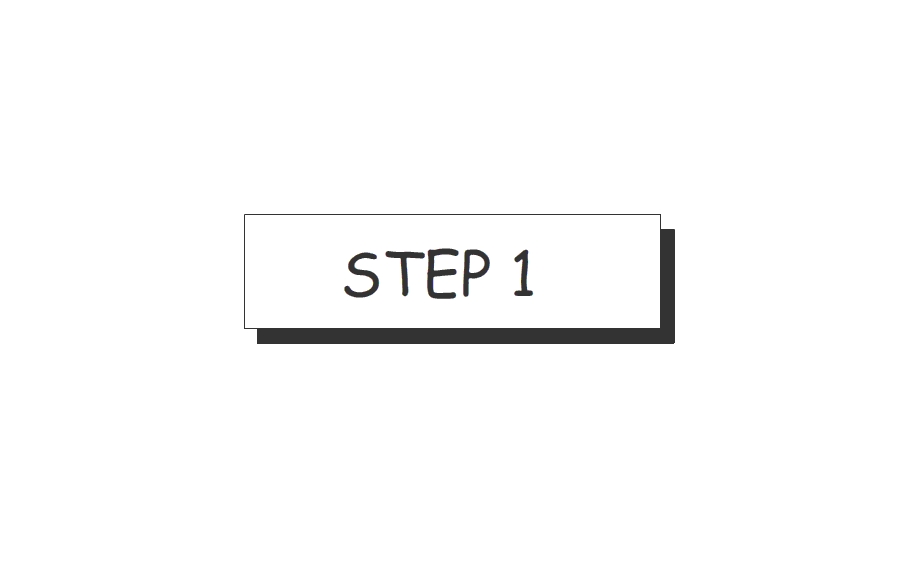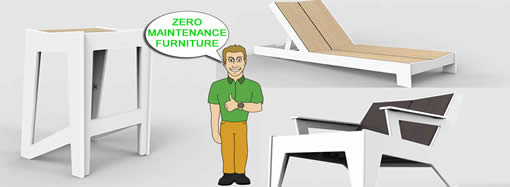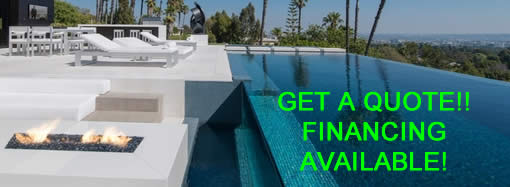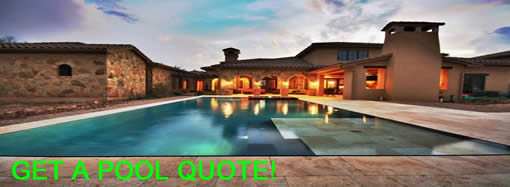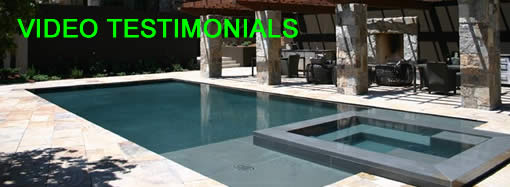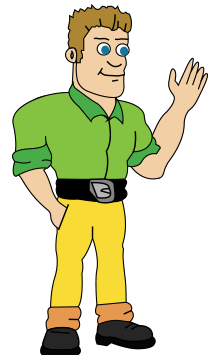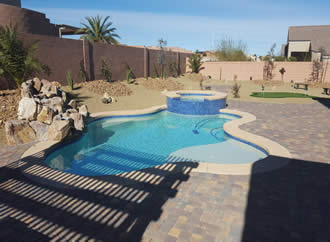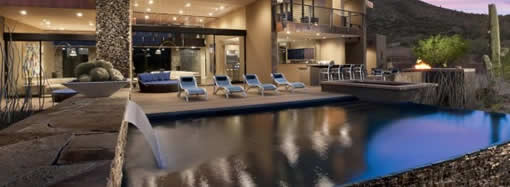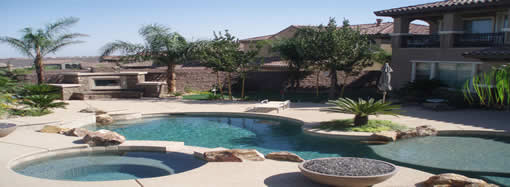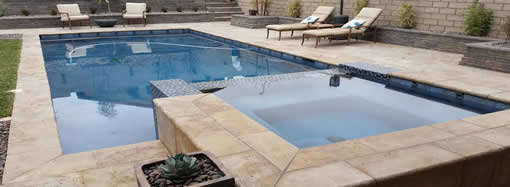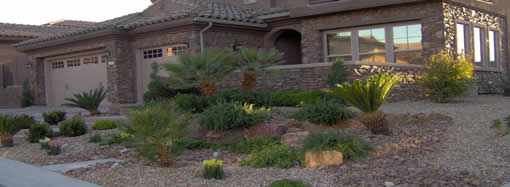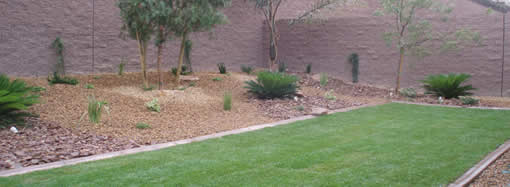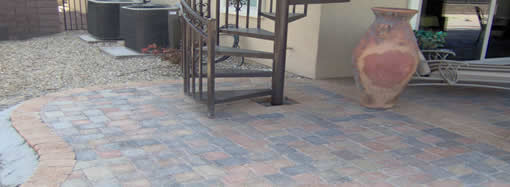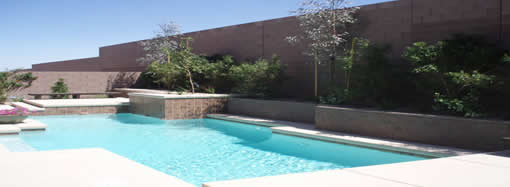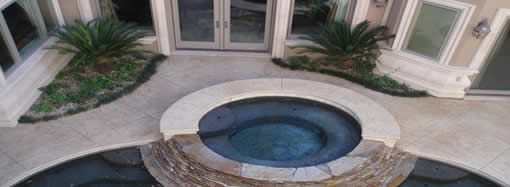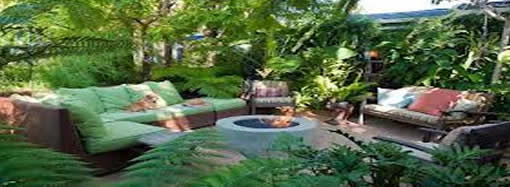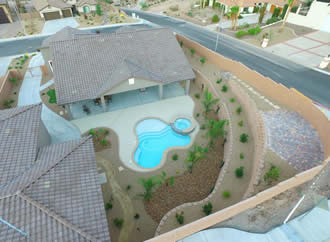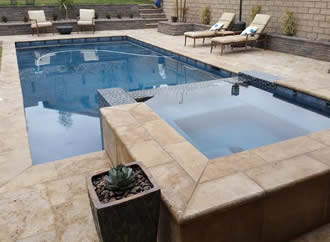A common problem Greencare encounters in Las Vegas and surrounding areas is water coming through walls and draining from one home to another. On several homes the lots are actually designed this way. Water is going to find the easiest route to get to the lowest elevation. When the builder first started to grade out the land for your development they had to build homes on flat surfaces and steer the water to the lowest point into the eventual storm drain if a heavy rain hit. Most of the water will end up draining into the ground before it gets to the storm drain. In some instances the ground will appear damp for weeks if not months and may never completely dry out if shaded. The goal in drainage planning is to steer the water away from the foundation of your home and sometimes that means from one lot elevation to another lot elevation that is lower.
The desert soil in Las Vegas does not drain well in most areas. This is why if you have a drip system in your yard and you are watering regularly there will be areas that potentially always remain damp. The rock may look spotty and damp even in areas that are far away from plants. This does not necessarily mean there is a leak. Decorative rock will also draw water into the rock itself from the ground and sometimes appear damp and spotty even long after the watering timer has stopped. If watering times are set every day or even a few times per week it may never completely dry out. The rock Greencare installed here was laid down over the natural drainage path of the yard and Greencare installed real grass so the rock will often look spotty long after watering. Grass is not native to the Nevada desert so you have to water abundantly and the ground doesn’t drain well so this is what happens. You have to take the good with the bad. Some rocks are more porous than others so some will absorb more water and look damp, it is normal.
Water is coming through my wall? Or…There is white residue on my wall, why?
The wall seen on the left has a bad case of efflorescence. The white minerals leaching from the mortar have seriously stained both the stone and the mortar.
The first thing to realize is that these mineral deposits are just an aesthetic problem. They do not compromise the structural integrity of any of the masonry in and about your new home. The white powder you see is efflorescence. The brick, stone, concrete block, mortar etc. contain water soluble salts that are the source of the white deposits. Soil behind retaining walls can also contain these same salts.
These trapped salts are set into motion when water enters masonry. The water dissolves the salts and carries them through the masonry towards the surface. Sunlight and wind draw the water to the surface but as the water evaporates, the salts are left behind.
The salts contained in the brick, mortar, stone, concrete block eventually exhaust themselves and the white mineral deposits simply go away. But salts within soil can persist for decades. Each time you try to wash the wall surfaces to remove the salts, you actually compound the problem. The water you use simply soaks into the masonry surfaces and dissolves the salts to create more problems days later. The surfaces typically look fantastic when wet, but the white powder appears again when the surfaces dry.
To stop the efflorescence you must stop all water from entering the masonry so if plants need water to survive you are in a catch 22. Either no plants or deal with the white residue. Efflorescence is very common on new brick and stonework.
When a retaining wall is built then is sealed and is backfilled with dirt even though it was treated with a waterproofing compound you will see water on the other side. There are a few reasons for this: If the house on the other side is at a lower grade the water will come through below the ground level of the higher elevation home, which we can’t stop because we can’t seal below the ground. Water flows downward and once it is below ground level the wall on the lower side will draw the water in and therefore you get the water coming through and the residue on the lower side. Even if the homes are at the same level, at times the water will still come through because CMU blocks will actually draw the water upwards due to the fact they are so porous.
The only way to stop this would have been to seal the entire wall below the ground level when constructed. Sealing walls for future possible water is not common practice with builders. The builder should have done this when the wall was being constructed. It would have taken some time but would have helped stop the water and the efflorescence.
But that’s not normally the case so here we are. Efflorescence happens. It is part of building new things. It eventually goes away after deposits are exhausted, but this process can take years. When possible, it is best to just let the problem diminish on its own.
Stopping water from entering masonry is the best way to make efflorescence stop. But it is not as easy as one might think. Water can enter masonry and travel up, down and sideways! You can actually get efflorescence on masonry walls caused by moisture in the soil that wicks up a wall.

